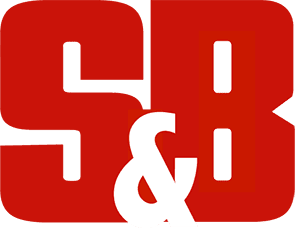As metal fabrication experts, it’s our business to know about the different options available for the precision cutting metal materials. Among the standard cutting options out there, three rise to the top as the most common: laser cutting, water jet cutting, and plasma cutting. For precision applications, which are the majority of what we deal with at S&B, laser and water jet are the two most popular options. We’d like to take some time to investigate these alternatives, and explore the different applications, strengths, and weaknesses involved in each process, and our preferences.
Water jet cutting is just what it sounds – an extremely high-pressure stream of water (and an added abrasive, usually garnet) is directed at a material that cuts through it. Essentially, this is extremely precise and expedited erosion of the material. Water jet cutting is popular because of the versatility of materials it can cut (virtually any solid material), and the range of thicknesses it can handle, which are greater than the other cutting methods’ capabilities. However, there are several disadvantages, especially for our cutting applications: water jet cutting takes much more time to complete, is a noisier and messier operation, and requires a much more involved cleanup/disposal procedure than laser cutting. For precision sheet metal applications, which are our bread and butter here, there is no match for the speed of laser cutting (while plasma cutters can operate at faster speeds, the quality of the cut edge decreases and the size of the heat affected zone increases). Also, with our automated Mark II load/unload system, we can keep a machine running overnight with no supervision – an advantage that translates into great turn-around times for our customers, which is something we value highly. The laser operation is also far cleaner than water jet, which creates an abundance of wastewater and material, for which the disposal can be a costly, highly regulated, and time-consuming process. Add to these things the fact that laser cutting provides tolerances to within 0.002”, and you understand why we at S&B have chosen laser cutting for our automated cutting operations.
For custom metal products and services, there can be a large variety of considerations that go into every job. At S&B, you can trust our experience and expertise to guide you through the best way to achieve the results you’re looking for. Contact us today to start seeing the results you’re looking for.





